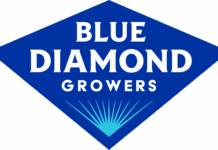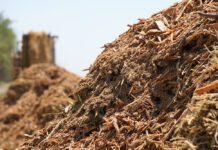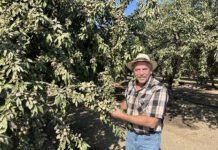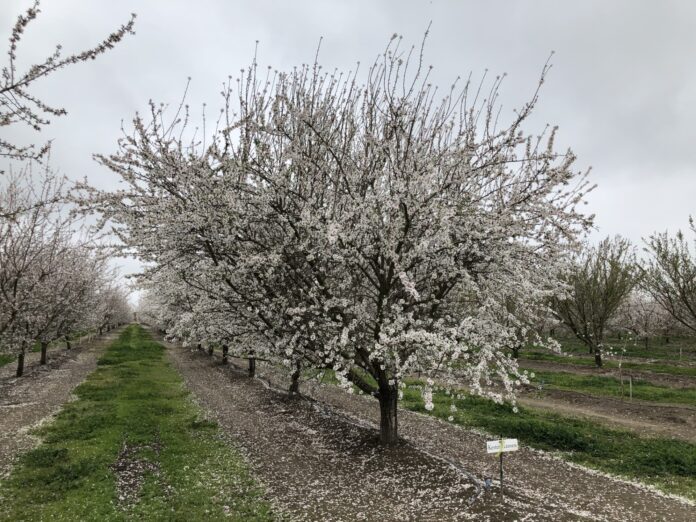
Evolving growing conditions, uncertain water availability and quality, along with global competition, are spurring efforts to develop new almond varieties and rootstocks that will meet those challenges.
“We have to look at future needs and which needs 20 years from now will be different than they are now,” UC Davis Plant Breeder Tom Gradziel said.
The UC Davis Variety and Rootstock Development Programs in cooperation with private breeders are working on genetic solutions for current and emerging challenges in California. While California’s climate has given almond growers an edge over global competitors that may not always be the case.
“Priorities will change in the future,” Cliff Beumel president of tree nursery Agromillora, confirmed.
Given the current picture of low returns in almond production, Beumel added the outlook for the future is somewhat muddled. Growers will need new almond varieties and rootstocks in the future to be competitive on the global market, address environmental challenges and widen the harvest window, but they will also have needs specific to their growing regions.
Almond growers, and those planning their first orchards, have many choices in varieties and rootstocks, but the selection has to match the site characteristics. Climate, soil type, water quality and disease and insect pressure are immediate concerns. Variety compatibility with a chosen rootstock further refines the decision. On top of that, yield and meeting consumer demand have to be considered.
Gradziel, who has been conducting UC Davis- and Almond Board of California (ABC)-funded almond research, said additional priorities identified by growers and processors for variety development include self-fruitfulness, disease and salinity resistance, and productivity with less water use. Processors are looking for varieties that have improved flavor, storability, oil and protein content, and kernel sizes to meet consumer demand.
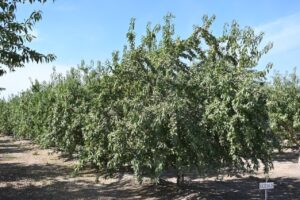
Industry Investment
The Almond Board of California has invested an estimated $8 million in almond variety development and rootstock development over the past decades. UC variety development began in the 70s and rootstock in the 80s. Private breeders have also significantly contributed to breeding efforts. In addition, with Almond Board, Cooperative Extension and local grower support, UC has implemented regional variety trials of most commercial varieties and rootstocks for regional performance, rootstock compatibility, resistance to diseases, salinity and drought. The trials provide growers with some confidence of the variety’s characteristics and possible shortcomings.
In his 2023 research update, Gradziel said processing and marketing needs along with new production challenges have slowed almond breeding progress worldwide.
He said a recent study has shown most almond breeding programs in Spain, France, Chile and Australia are breeding in self-pollen-compatibility as a means to have self-fruitful varieties. Because most are using the same genetic source for self-compatibility (the variety Tuono), they are dramatically narrowing the germplasm base for their new varieties. Some of the Spanish almond breeders have reported reduced yields as a consequence of this inbreeding.
The UC Davis almond breeding program as well as private breeders are exceptions to this because they have used commercial peach (Prunus persica) as an additional source for self-compatibility/self-fruitfulness while the UC Davis program has used both commercial peach, the wild peach species Prunus mira, and the wild almond species Prunus webbii, as alternative, additional sources for self-compatibility/self-fruitfulness. Not only are these programs avoiding inbreeding, they have also benefited from the introduction of new exotic germplasm which also possess a wide range of potentially valuable traits for future almond improvement. Those traits include tree architectures amenable to catch frame harvest, improved disease resistance, infield hulling, improved oil stability and resistance to new nematode threats along with improved water use, salt tolerance, lower chill requirements and tolerance to frost.
Reid Robinson at Sierra Gold said their breeding program has incorporated a diversity of genetics to create new almond varieties and rootstocks. They have recently released the new self-fertile variety “Earlybird.”
Burchell Nursery as well as Duarte Nursery also have very long histories of breeding and releasing almond varieties.
Advances in rootstock breeding are notable for successfully meeting challenges to the point where almond production has been pushed into growing areas where it was not previously possible.
“New rootstocks really opened up more acreage,” Beumel said. “They give more protection when replanting orchards with the resistance of hybrid rootstocks.”
Beumel said growers in California are looking for more ‘fool proof’ rootstocks with resistance to replant disease. He said 10 years ago, any peach-almond hybrid was a good rootstock choice. Now, he said, growers would like as many resistance traits as possible stacked in one rootstock as most orchards are now replants.
Growers in the north part of the state particularly want resistant rootstocks with good vigor and anchorage along with broad compatibility with all varieties. These rootstocks also need to be tested in orchards throughout the Central Valley on all major varieties to be sure they are productive, Gradziel said.
Grower variety desires include more self-fertile options. Self-fertile varieties have the ability to accept their own pollen, Gradziel said, but structure of the flowers needs to be improved so a very high percentage of flowers are fertilized. There are new self-fertiles in the pipeline, Beumel said, and USDA, UC and private breeding programs will have self-fruitful varieties that will widen the harvest window. This is one of the current priorities, Beumel said. Will they also meet kernel quality and flavor expectations? There will likely be a few subtle flaws that appear over time, he said. Kernel size has been a common issue in some promising crosses.
A USDA-developed variety, Yorizane looked wonderful in early trials, Beumel said, but it will take time to gather data on nut quality and yield. The next step will be the ‘let’s see’ period. About 10% of almond growers are willing to take a chance on a new variety that has not been widely planted, Beumel said. The rest of the growers, Beumel added, are on the conservative side and will wait to see how a new variety performs over time.
“That 10% will either win or take the sword,” Beumel said.
The bottleneck in the breeding process is long-term testing to be sure new varieties and rootstocks will meet expectations without serious production flaws. Identifying key problems and making the crosses to achieve solutions is being done. Gradziel said to avoid risks, the promising crosses need to be tested for 10 to 20 years before release for commercial production.
He reported that a final goal of the UC Davis almond breeding program is the development of molecular markers for crucial traits so future public and private breeding efforts can use this information to dramatically speed up the selection process.

Cecilia Parsons | Associate Editor
Cecilia Parsons has lived in the Central Valley community of Ducor since 1976, covering agriculture for numerous agricultural publications over the years. She has found and nurtured many wonderful and helpful contacts in the ag community, including the UCCE advisors, allowing for news coverage that focuses on the basics of food production.
She is always on the search for new ag topics that can help growers and processors in the San Joaquin Valley improve their bottom line.
In her free time, Cecilia rides her horse, Holly in ranch versatility shows and raises registered Shetland sheep which she exhibits at county and state fairs during the summer.







